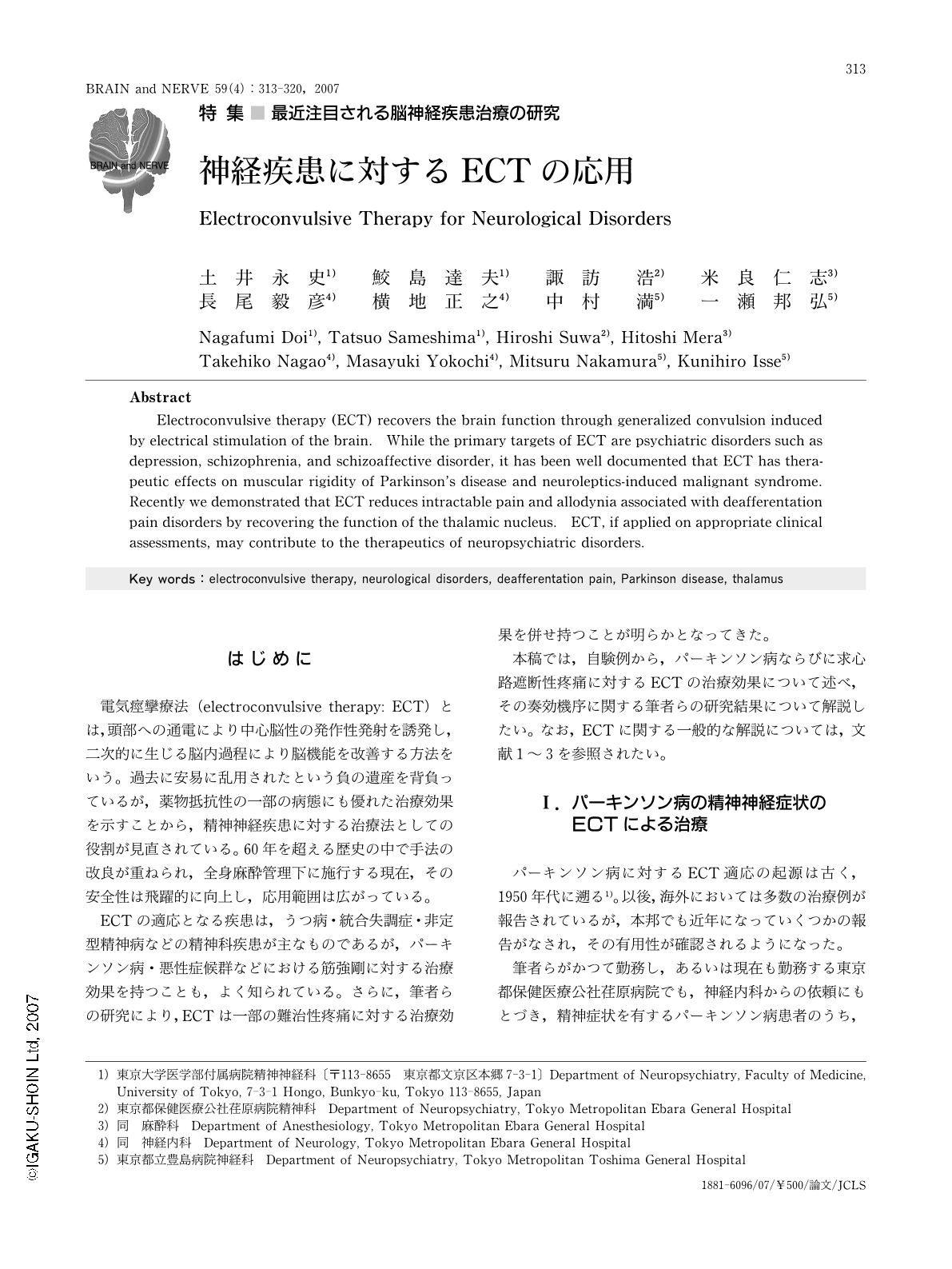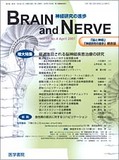Japanese
English
- 有料閲覧
- Abstract 文献概要
- 1ページ目 Look Inside
- 参考文献 Reference
はじめに
電気痙攣療法(electroconvulsive therapy: ECT)とは,頭部への通電により中心脳性の発作性発射を誘発し,二次的に生じる脳内過程により脳機能を改善する方法をいう。過去に安易に乱用されたという負の遺産を背負っているが,薬物抵抗性の一部の病態にも優れた治療効果を示すことから,精神神経疾患に対する治療法としての役割が見直されている。60年を超える歴史の中で手法の改良が重ねられ,全身麻酔管理下に施行する現在,その安全性は飛躍的に向上し,応用範囲は広がっている。
ECTの適応となる疾患は,うつ病・統合失調症・非定型精神病などの精神科疾患が主なものであるが,パーキンソン病・悪性症候群などにおける筋強剛に対する治療効果を持つことも,よく知られている。さらに,筆者らの研究により,ECTは一部の難治性疼痛に対する治療効果を併せ持つことが明らかとなってきた。
本稿では,自験例から,パーキンソン病ならびに求心路遮断性疼痛に対するECTの治療効果について述べ,その奏効機序に関する筆者らの研究結果について解説したい。なお,ECTに関する一般的な解説については,文献1~3を参照されたい。
Abstract
Electroconvulsive therapy (ECT) recovers the brain function through generalized convulsion induced by electrical stimulation of the brain. While the primary targets of ECT are psychiatric disorders such as depression, schizophrenia, and schizoaffective disorder, it has been well documented that ECT has therapeutic effects on muscular rigidity of Parkinson's disease and neuroleptics-induced malignant syndrome. Recently we demonstrated that ECT reduces intractable pain and allodynia associated with deafferentation pain disorders by recovering the function of the thalamic nucleus. ECT, if applied on appropriate clinical assessments, may contribute to the therapeutics of neuropsychiatric disorders.

Copyright © 2007, Igaku-Shoin Ltd. All rights reserved.


